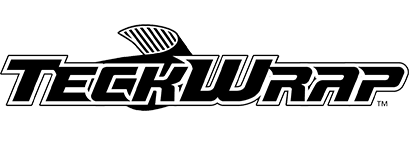How to Get Ready for Post-Heat on Recessed Areas
We have mentioned a lot of time that post-heating is extremely important for long term durability. But to post-heat well, surely we have some steps to go through. Today we will be giving some tips in terms of the setup for a recessed area before post-heating.
For demonstration, we will take a van as our case study. And the side of its recessed area is going to be wrapped. To prep it, first we will use a scratchless sponge to go over the entire recessed area, even the door handle area. This sponge creates little micro scraps here, but you do not see them, which we will talk about later. Then we can come back with a microfiber towel or paper towel, degrease it, get it clean and finish the setup.
Here we are using color change film. We set up at the top of the hinge and bridge it. Remember to keep the backing paper on for the rest of the material. We set it up on the side and do not forget to pick the material up to relax it on edge. We can frame the edge then work to the top.
Once the edge is set, and the top area is framed, we can pull the backing paper a little bit more. And we take our squeegee to go left to the right. We can also work around the recessed area near the door handle and to bridge the material over. Then keep focusing on the main recessed area again.
We can now use our heat gun. But notice though: heat the material on the area that is about six inches below the recessed area. Then we can formulate the recessed area. So remember: not to focus on right where you are going to feed the material in right away. This will keep the color and keep the adhesive in the recessed area. And it will keep us from overstretching the film.
As soon as we go through the recessed area with a finger, we can use our squeegee to glide it over again at a 45-degree-angle, working the material a little farther away from the recessed area itself. Remember to squeegee from the top to the bottom though. Do not do it in the middle and work to the recessed area. Go through the recessed area first.
Now that the recessed area is wrapped, usually the entire car is done theoretically. But we have a few tips for you to make sure the material on recessed areas would stay for the long term.
Here we can explain more in terms of the reason why we use the scratchless sponge. Many wrappers would know that we should not post-heat right away as soon as the material is put on. Because although the surface on the pain feels smooth, if we look at the profile, you will see it looks like a piece of the valley, where there are concaves. This surface is not 100% smooth. And the reason why we use that sponge is to create extra surface energy for those cracks with micro scraps.
As we apply the material to the recessed area with the adhesive layer, the material is floating on this surface. And many of us wrappers know that the adhesive will flow into whatever you are wrapping after 24 hours. Thus, it flows into those spots and will be settled.
Let’s think about it: What is inside these valleys right now if we post-heat right away as we apply? It is air. So if we post-heat immediately, the air in those valleys will expand, which will possibly burst and damage the wrap.
This is why most manufacturers would tell you in the product information that does not post-heat until the wrapped car stay long enough for 30 minutes or longer. We will not wait longer than 24 hours to miss our chance though. TeckWrap recommends to wait for half an hour; it will minimize the chance of the material popping and bursting.
The other tip is to make the best use of a roller. There are a handle and a firm rubber on it, which is a great tool. With this roller, we can help the adhesive to flow into those valleys quickly. We can run it through the recessed area, forcing the adhesive to flow with its handle, and in the meantime use our heat gun along the side (Notice: this is not post-heating yet).
What we are doing here is to push the rubber for the deepest into the recessed area. We heat the material so that we can push the adhesive in.
So these are the steps we will have to go through before post-heating. As soon as you finish setting up with these, post heat it, it is safe to say the material would stay for long term on the recessed areas.

